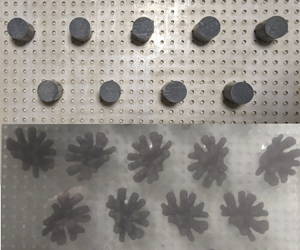Refine listing
Actions for selected content:
1418669 results in Open Access
Percutaneous permeabilisation with electrosurgery of intrahepatic inferior vena cava agenesis in a 12-year-old boy
-
- Journal:
- Cardiology in the Young / Volume 35 / Issue 2 / February 2025
- Published online by Cambridge University Press:
- 30 January 2025, pp. 427-429
-
- Article
- Export citation
Swedish microwave days 2023 special issue
-
- Journal:
- International Journal of Microwave and Wireless Technologies / Volume 16 / Issue 10 / December 2024
- Published online by Cambridge University Press:
- 30 January 2025, p. 1623
-
- Article
-
- You have access
- Open access
- HTML
- Export citation
Atticus Bagby-Williams and Nsambu Za Suekama. Black Anarchism and the Black Radical Tradition. Moving Beyond Racial Capitalism. Ed. by Shannon Fauwkes and Howard Waitzkin. Daraja Press, Cantley 2022. vi, 54 pp. Ill. $18.00. (E-book: $5.00.)
-
- Journal:
- International Review of Social History / Volume 69 / Issue 3 / December 2024
- Published online by Cambridge University Press:
- 30 January 2025, pp. 548-551
-
- Article
- Export citation
Pleistocene aardvark (Orycteropus afer) burrow traces on South Africa’s Cape coast
-
- Journal:
- Quaternary Research / Volume 124 / March 2025
- Published online by Cambridge University Press:
- 30 January 2025, pp. 139-152
-
- Article
-
- You have access
- Open access
- HTML
- Export citation
Cyber Threats to Canadian Democracy Holly Ann Garnett and Michael Pal, Montreal: McGill-Queen's Press, 2022
-
- Journal:
- Canadian Journal of Political Science/Revue canadienne de science politique / Volume 57 / Issue 4 / December 2024
- Published online by Cambridge University Press:
- 30 January 2025, pp. 962-963
-
- Article
- Export citation
Caring for Everyone: Effective and Inclusive Communication in Perinatal Care
-
- Article
-
- You have access
- Open access
- HTML
- Export citation
Real-world clinical impact of plasma cell-free DNA metagenomic next-generation sequencing assay
-
- Journal:
- Infection Control & Hospital Epidemiology / Volume 46 / Issue 5 / May 2025
- Published online by Cambridge University Press:
- 30 January 2025, pp. 504-511
- Print publication:
- May 2025
-
- Article
-
- You have access
- Open access
- HTML
- Export citation
On the use of simplified geometries to represent turbulent flow over coral reefs
-
- Journal:
- Journal of Fluid Mechanics / Volume 1004 / 10 February 2025
- Published online by Cambridge University Press:
- 30 January 2025, A11
-
- Article
- Export citation
Reproductive biology of the sea cucumber Holothuria arguinensis (Echinodermata: Holothuroidea) and its relationship with the environment in the coastal waters of Morocco
-
- Journal:
- Journal of the Marine Biological Association of the United Kingdom / Volume 105 / 2025
- Published online by Cambridge University Press:
- 30 January 2025, e5
-
- Article
-
- You have access
- Open access
- HTML
- Export citation
Green Regionalism in World Trade Law
-
- Journal:
- World Trade Review / Volume 24 / Issue 2 / May 2025
- Published online by Cambridge University Press:
- 30 January 2025, pp. 172-193
- Print publication:
- May 2025
-
- Article
-
- You have access
- Open access
- HTML
- Export citation
Comparative variation analysis at cross roads: perspectives and methods - Benedikt Szmrecsanyi and Jason Grafmiller, Comparative Variation Analysis: Grammatical Alternations in World Englishes Cambridge; New York, NY: Cambridge University Press, 2023. Pp. xvii+218. Hardback $125, ISBN: 9781108491563
-
- Journal:
- English Today , First View
- Published online by Cambridge University Press:
- 30 January 2025, pp. 1-3
-
- Article
- Export citation
Tropical forests and cocoa production: synergies and threats in the chocolate market
-
- Journal:
- Environmental Conservation / Volume 52 / Issue 1 / March 2025
- Published online by Cambridge University Press:
- 30 January 2025, pp. 20-30
-
- Article
-
- You have access
- Open access
- HTML
- Export citation
Exploration of cognitive flexibility and emotion recognition in adolescents with eating disorders
-
- Journal:
- Journal of the International Neuropsychological Society / Volume 31 / Issue 2 / February 2025
- Published online by Cambridge University Press:
- 30 January 2025, pp. 138-146
-
- Article
-
- You have access
- Open access
- HTML
- Export citation
ROB volume 42 issue 11 Cover and Front matter
-
- Article
-
- You have access
- Export citation
Morphological and molecular phylogeny of Clinostomum sp. (Digenea: Clinostomidae) metacercariae, using DNA barcode from a South American freshwater fish
-
- Journal:
- Journal of Helminthology / Volume 99 / 2025
- Published online by Cambridge University Press:
- 30 January 2025, e13
-
- Article
- Export citation
The effects of maternal body weight on iodine concentration in breast milk and cord blood and infant growth
-
- Journal:
- Journal of Developmental Origins of Health and Disease / Volume 16 / 2025
- Published online by Cambridge University Press:
- 30 January 2025, e6
-
- Article
- Export citation
Extending surjective maps preserving the norm of symmetric Kubo-Ando means
- Part of
-
- Journal:
- Canadian Mathematical Bulletin / Volume 68 / Issue 3 / September 2025
- Published online by Cambridge University Press:
- 30 January 2025, pp. 777-786
- Print publication:
- September 2025
-
- Article
- Export citation
Social mixing patterns of United States healthcare personnel at a quaternary health center: a prospective observational study
-
- Journal:
- Infection Control & Hospital Epidemiology / Volume 46 / Issue 3 / March 2025
- Published online by Cambridge University Press:
- 30 January 2025, pp. 289-297
- Print publication:
- March 2025
-
- Article
-
- You have access
- Open access
- HTML
- Export citation




